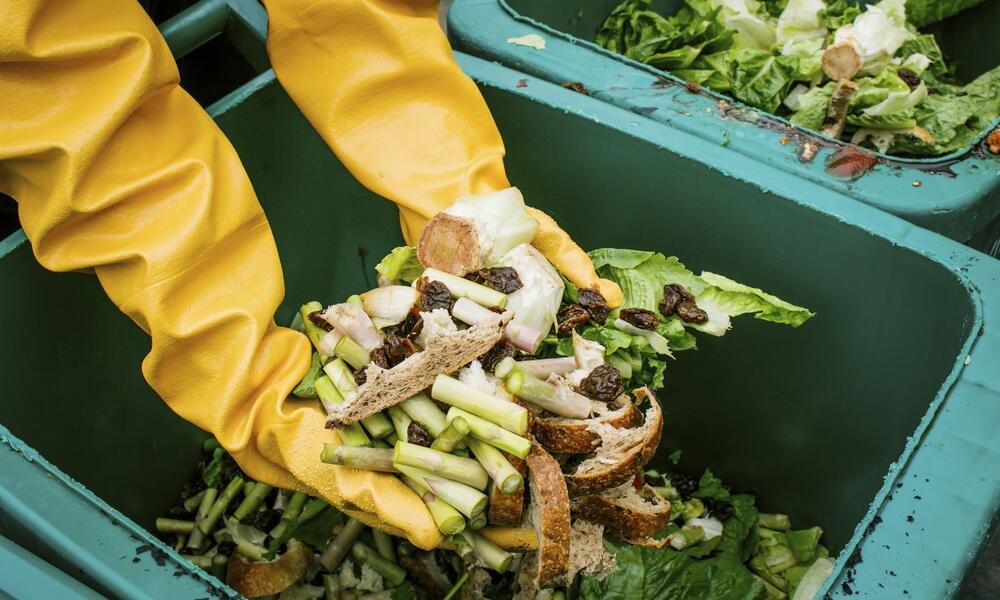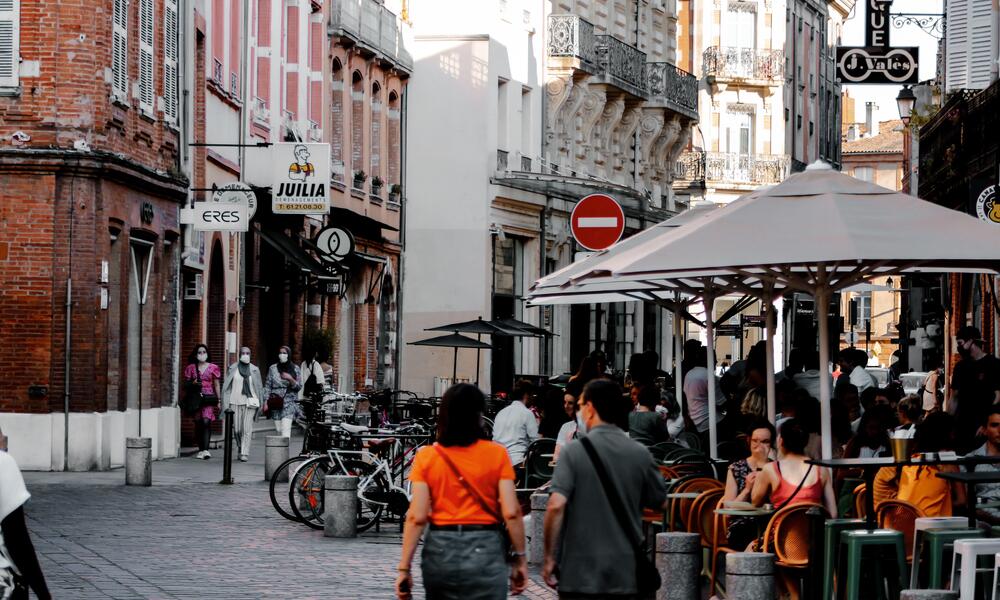Un-stranding Assets Part 2: Transforming city centers
- Date: 30 June 2021
- Author: Katherine Devine, Director of Business Case Development, Markets Institute, WWF
COVID-19 transformed urban spaces from bustling city centers to deserted concrete landscapes. While downtowns may soon return to greater normalcy, it is likely that many aspects of office culture will change. Some companies, such as Twitter and Zillow, have declared that employees can choose to work remotely indefinitely, and more organizations will follow suit either with fully remote work or blended models. This may well lead to a massive transformation of office culture, amenities, and the makeup of city centers and suburban office parks. But how can these changes be leveraged to enable a more sustainable food system?
Consider the assets that will be fully or partially stranded, or transformed: office buildings, parking lots and garages, rooftops, restaurants, streets, transportation, and more. Not to mention labor: with fewer employees in offices, jobs in restaurants, as well as cleaners, caterers, and others will also change. Some of these jobs will remain, while others may go away or look different than before.

COVID-19 transformed urban spaces from bustling city centers to deserted concrete landscapes.
While many organizations may either own buildings or have long-term leases, as those leases run out, it is likely that many companies will seek to right-size their space based on remote work policies, enabling some employees to return to the office but fewer than prior to COVID-19. What will happen to all that office space? What are new ways that employees may seek to interact with one another, or live and work differently due to hybrid remote work options? The potential is endless but the time to act is now. If government and business use this time of disruption to think radically, under-utilized office buildings and other stranded assets could be repurposed for any number of uses.
With the proliferation of online ordering and food e-commerce, space could be repurposed for mini distribution centers, ghost kitchens, small business incubators, and more. A considerable challenge in online grocery delivery is cost, with time and inefficiency baked into a model that largely relies on shoppers going to a grocery store, perusing the store as regular customers, and then delivering to the home. Closed mini-distribution centers could be set up in dense population centers, using existing but unused spaces, to optimize preparation of online orders. Similar models are happening with ghost kitchens, where kitchen space is leveraged for delivery and, in some cases, pickup. Such kitchens are enabling entrepreneurs or existing businesses to test new menus and restaurant concepts in a lower-cost, lower barrier-to-entry way and have the potential to disrupt the restaurant model over time.
Recent consumer research by Accenture highlighted that, of survey participants, 56% are buying more locally sourced products because of pandemic shopping habits, and 86% are likely to continue doing so after the pandemic. If local, state, and federal governments could provide further incentives for small, local businesses to encourage this trend, it could bolster local economies and increase consumer satisfaction. Stranded assets could be utilized as business incubators to encourage local innovation. This could be taken a step further by also encouraging growth in urban and controlled environment agriculture (CEA).
Produce on Demand
CEA, controlled environment agriculture or indoor farming, has expanded significantly in the last 10 years. One of the goals is to bring food closer to consumers, and what better way to do so than to grow it in under-utilized city spaces? Services such as Freight Farms, which works with farmers to use shipping containers for CEA, can move and scale quickly, mitigating the challenges of long-term planning that may be required to invest in more expensive city environments. Other types of CEA could repurpose empty or partially empty office buildings or other facilities to position themselves closer to dense urban populations, selling to supermarkets, restaurants, and other foodservice entities. WWF’s research on CEA has shown that there is potential to use modular systems to grow and expand quickly, enabling rapid response to demand. Further, indoor farms can create microclimates, allowing growth of products that would otherwise not be viable in a given region. This could lead to meeting localized demand in a targeted way, without altering the physical landscape.

One of the goals of indoor farming is to bring food closer to consumers, and what better way to do so than to grow it in under-utilized city spaces?
Taking Compost Mainstream
Consumers also gained a heightened awareness of food loss and waste, a powerful contributor to greenhouse gas emissions, during the pandemic. Early on in 2020, there were many articles about disrupted supply chains leading to dumped milk and plowed under vegetables. While some supply chain challenges rest in the hands of companies and government policy, government action could be taken to kickstart and incentivize local composting efforts, sub-leasing parking lots, vacant spaces, or otherwise underutilized areas for pickups or other models to increase residential composting. South Korea successfully implemented a nationwide composting initiative and now recycles 95% of its food waste. This moment could be a turning point where government repurposes under-used resources while also taking advantage of heightened consumer awareness of the impacts of food loss and waste to drive residential composting, as well as that of restaurants and other food businesses.

Now is the time to kickstart and incentivize local composting efforts, sub-leasing parking lots, vacant spaces, or otherwise underutilized areas for pickups or other models to increase residential composting.
Going al Fresco
As restaurants begin to reopen, not all consumers feel safe dining indoors yet. Many restaurants have been able to offer socially distanced outdoor dining, spilling over into sidewalks or temporarily closed streets. With fewer people in some downtown areas, this time could be used to consider how to permanently close some streets to offer more pedestrian-friendly experiences and year-round outdoor dining, where possible. Many of these slapdash accommodations were made in haste to scrape together some restaurant earnings and prevent additional closures. But, now that things are beginning to open, time could be taken to consider more thoughtful design accounting for longer-term urban planning.

This time could be used to consider how to permanently close some streets to offer more pedestrian-friendly experiences and year-round outdoor dining, where possible.
These are but a few of many potential ideas for how urban areas and office spaces could be transformed, leveraging this unique moment for change before the disruption window closes. What other ideas do you have for transforming urban spaces for more sustainable food systems? Share your thoughts with the Markets Institute at [email protected].